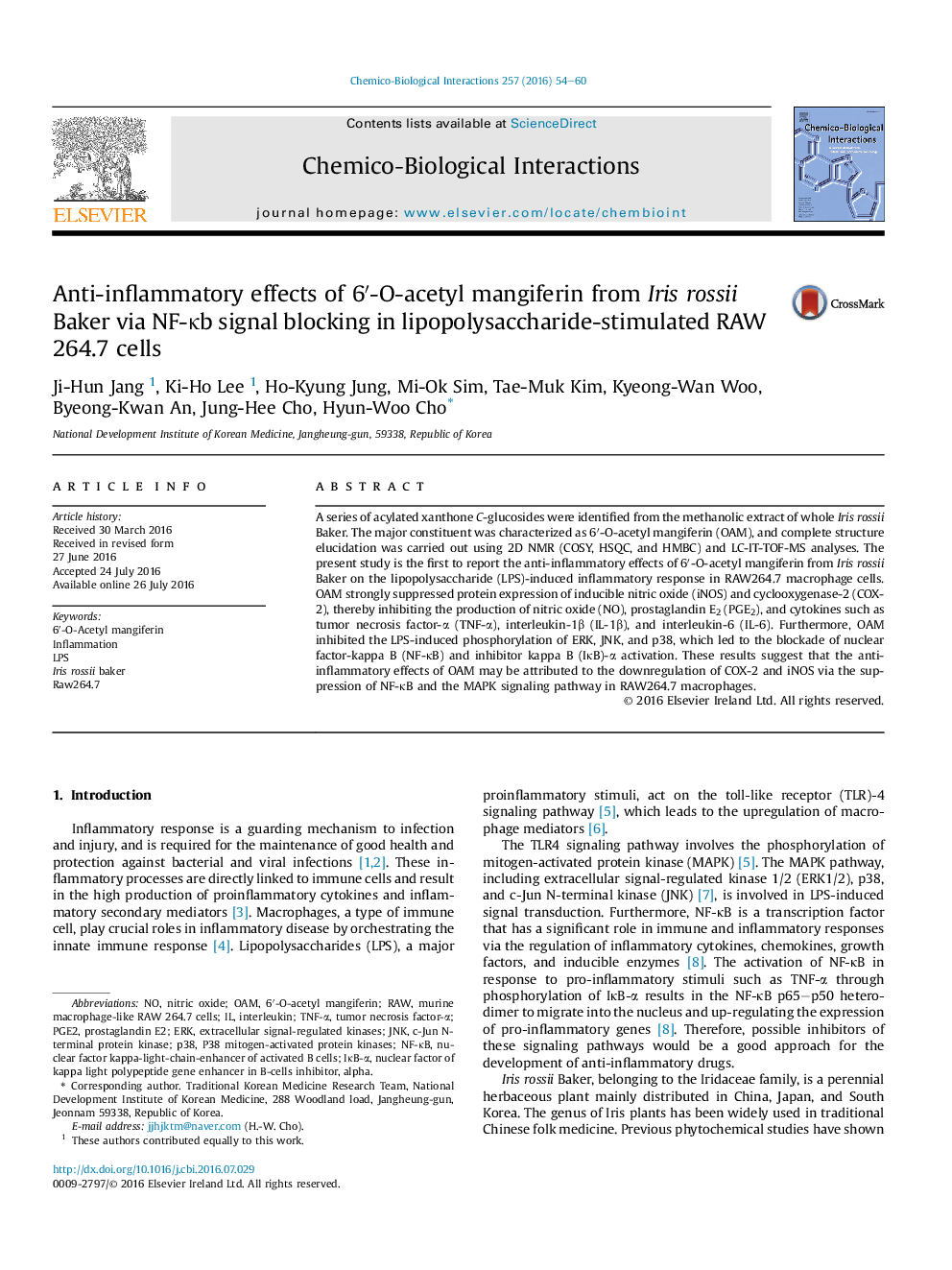| Article ID | Journal | Published Year | Pages | File Type |
|---|---|---|---|---|
| 2579799 | Chemico-Biological Interactions | 2016 | 7 Pages |
•6′-O-acetyl mangiferin (OAM) from Iris rossii Baker was isolated and characterized.•OAM decreased NO and PGE2 production in RAW 264.7 cells.•OAM strongly suppressed pathways of MAP kinases signaling.•OAM strongly suppressed nuclear translocation of NF-κB using Immunofluorescence assay.
A series of acylated xanthone C-glucosides were identified from the methanolic extract of whole Iris rossii Baker. The major constituent was characterized as 6′-O-acetyl mangiferin (OAM), and complete structure elucidation was carried out using 2D NMR (COSY, HSQC, and HMBC) and LC-IT-TOF-MS analyses. The present study is the first to report the anti-inflammatory effects of 6′-O-acetyl mangiferin from Iris rossii Baker on the lipopolysaccharide (LPS)-induced inflammatory response in RAW264.7 macrophage cells. OAM strongly suppressed protein expression of inducible nitric oxide (iNOS) and cyclooxygenase-2 (COX-2), thereby inhibiting the production of nitric oxide (NO), prostaglandin E2 (PGE2), and cytokines such as tumor necrosis factor-α (TNF-α), interleukin-1β (IL-1β), and interleukin-6 (IL-6). Furthermore, OAM inhibited the LPS-induced phosphorylation of ERK, JNK, and p38, which led to the blockade of nuclear factor-kappa B (NF-κB) and inhibitor kappa B (IκB)-α activation. These results suggest that the anti-inflammatory effects of OAM may be attributed to the downregulation of COX-2 and iNOS via the suppression of NF-κB and the MAPK signaling pathway in RAW264.7 macrophages.
